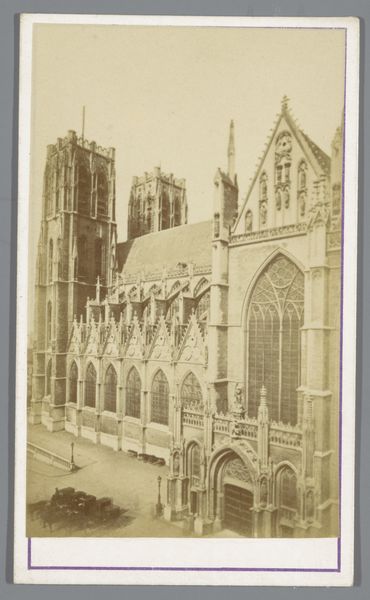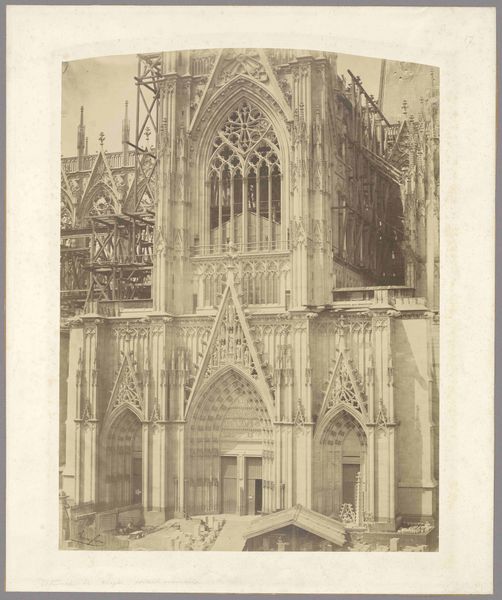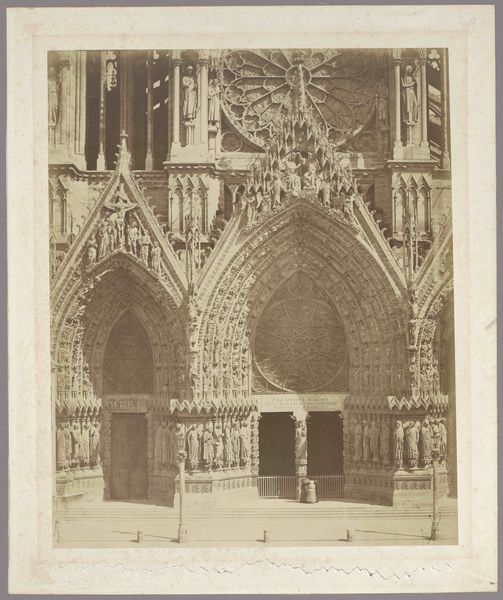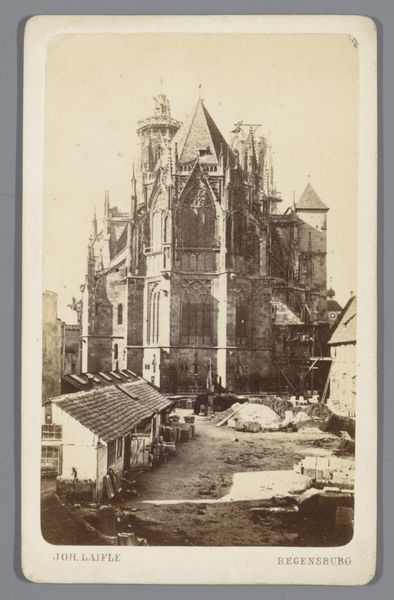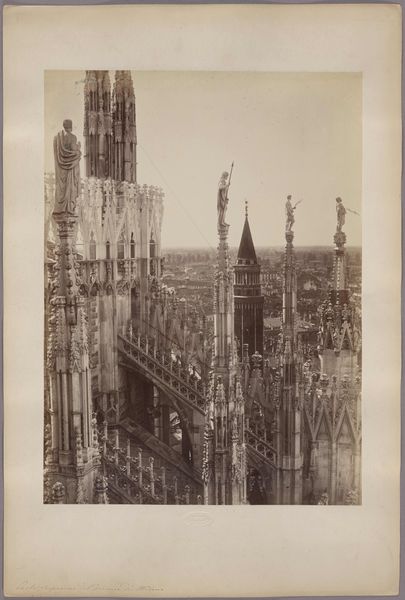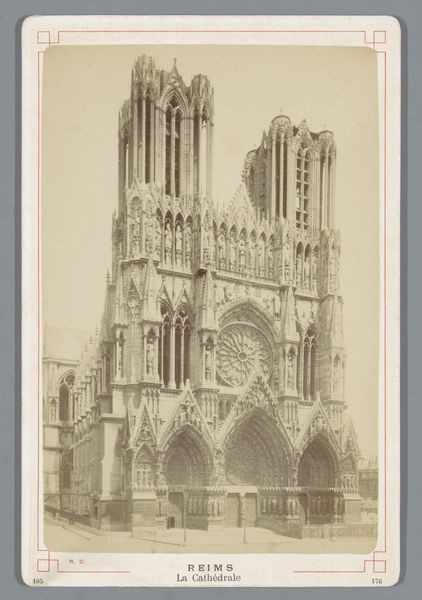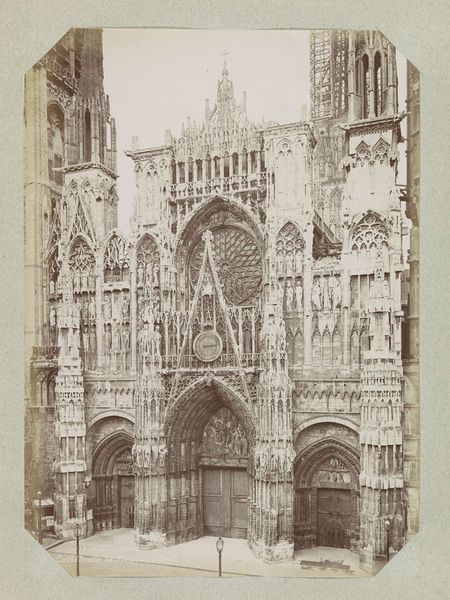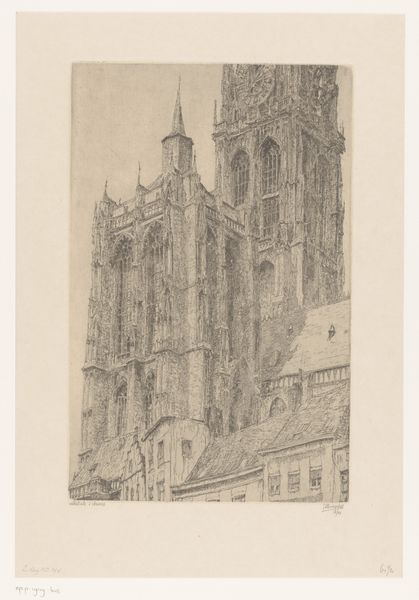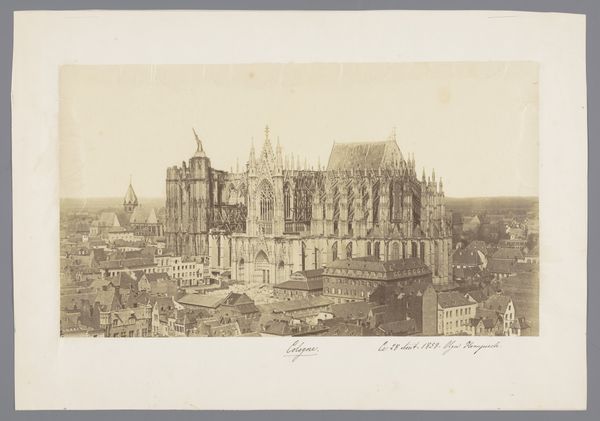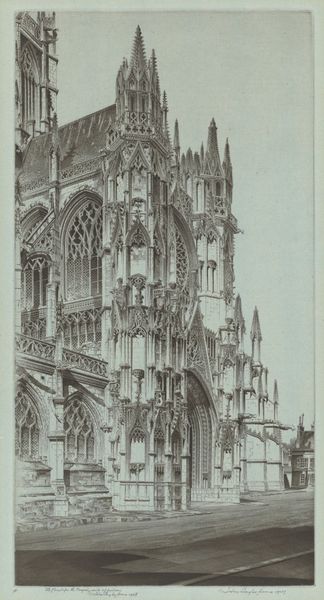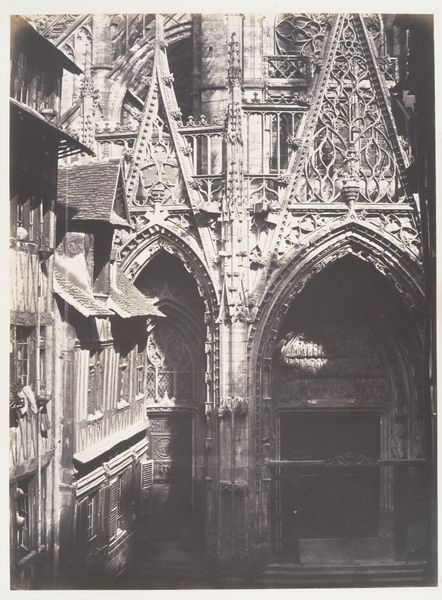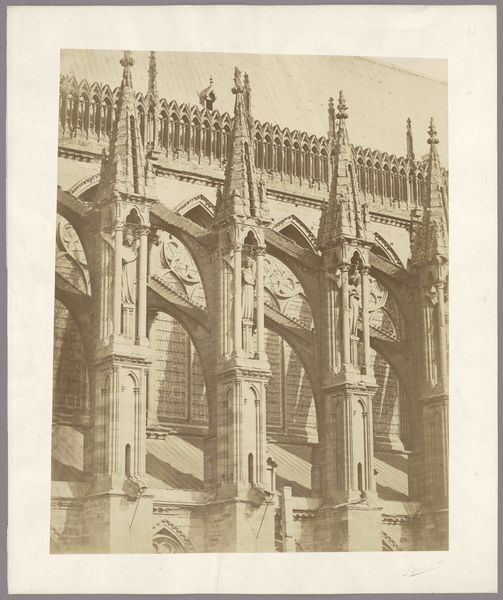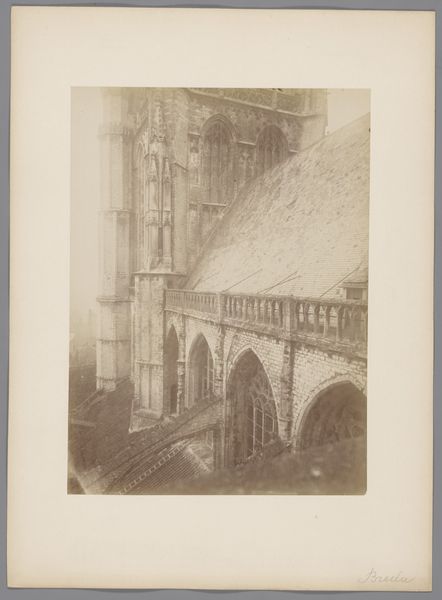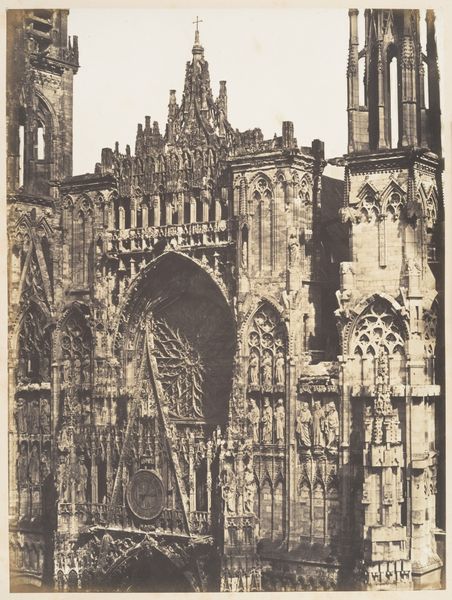
Zuid-oostelijk deel van de Sint-Janskathedraal te 's-Hertogenbosch, gezien vanaf het dak c. 1875 - 1900
0:00
0:00
Dimensions: height 229 mm, width 171 mm, height 319 mm, width 175 mm
Copyright: Rijks Museum: Open Domain
Editor: Here we have an anonymous photographic print from between 1875 and 1900, showing a southeastern section of St. John's Cathedral in 's-Hertogenbosch. It has such a close vantage point. What story does this photograph tell from your perspective? Curator: Well, it's tempting to simply admire the gothic details, isn't it? But, focusing on materiality, consider the sheer labour embedded within the cathedral’s construction and then the photographic process. We're looking at two distinct yet interwoven modes of production. One of stone and human muscle; the other involving emerging industrial technology capturing it. Editor: That’s interesting. I hadn’t really thought about that contrast. The cathedral embodies pre-industrial craft and labor. Curator: Precisely. And the photograph is a product of mass production. The photograph's existence relies on the social changes spurred by the Industrial Revolution. What does that juxtaposition suggest? How did those industrial methods change how monuments like this were seen or appreciated? Editor: Perhaps making them more accessible? Reproducible, able to be circulated, experienced vicariously? So no longer just a monument for the community where it physically exists, but for an ever growing external audience through photography. Curator: Exactly! And consider what materials are used: stone sourced, quarried, shaped; photographic chemicals manufactured. What do these materials, these very substances, reveal about the society that produced them, used them, consumed them? Editor: It puts it all into perspective. The layers of meaning just keep building, brick by brick...or should I say, exposure by exposure! I see now that the story isn't just about the cathedral itself. Curator: Right! It's a visual document revealing larger shifts in how we interact with, and replicate the world around us through labor and the availability of materials.
Comments
No comments
Be the first to comment and join the conversation on the ultimate creative platform.
